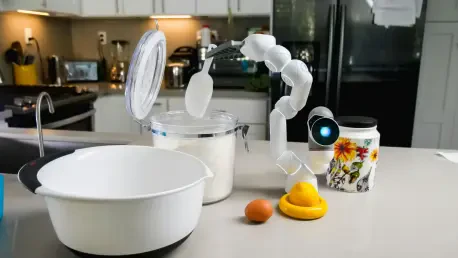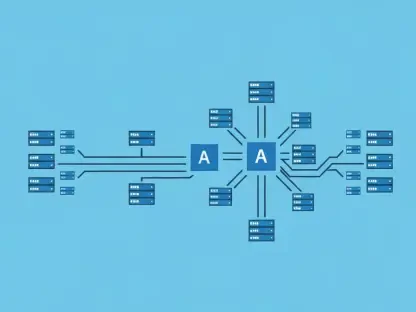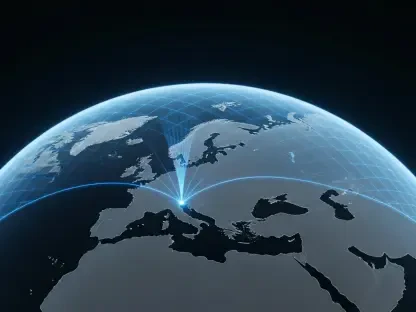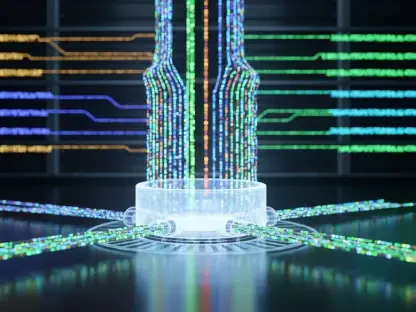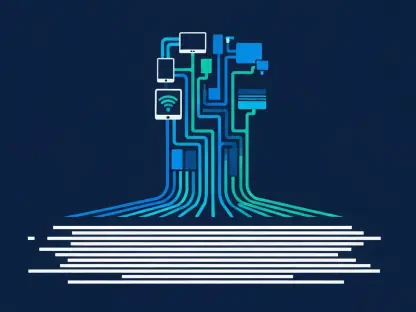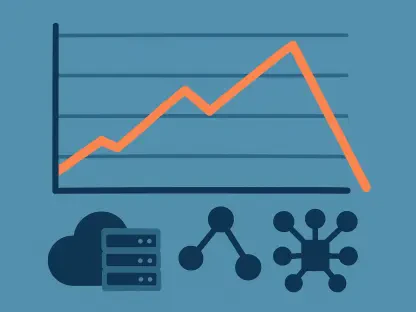The realm of robotics and automation has witnessed a remarkable evolution, transitioning from nascent concepts in labs to impactful applications across industries. The rapid advancements observed in recent years underline a broader trend towards integrating these technologies into everyday industrial practices. As industries grapple with labor shortages and an ever-increasing need for productivity, robotics, combined with artificial intelligence (AI), presents viable solutions. The ongoing shifts in the robotics sector signal a maturing industry driven by the collaboration of diverse technological innovations, paving the way for significant transformation in both industrial operations and economic frameworks.
Rising Investments in Robotics and Automation
A Surge in Financial Backing
Within the past year, investments into robotics startups have nearly doubled, reflecting heightened interest and potential for scalability in this burgeoning sector. This financial influx is particularly evident in the increasing median deal size across various funding stages. As later-stage valuations reach significant peaks, surpassing previous years, investor confidence in robotics is at an all-time high. The market’s optimistic trajectory suggests an earnest belief in turning theoretical tech concepts into tangible, wide-scale applications. Furthermore, the interest is not confined to just one facet of robotics innovation. From humanoid robots designed for service industries to collaborative bots (cobots) aiding manufacturing lines, the spectrum of investment is vast and diverse.
Diversified Applications and Growing Interest
The enthusiasm surrounding the robotics sector is not merely driven by technological novelty but by the real-world applications that address present-day industrial challenges. The deployment of robotic process automation (RPA) in sectors requiring precision demonstrates the adaptability and relevance of robotics. These software-driven machines have shown they are not just theoretical constructs but are vital in environments demanding continuous operation. Industries are beginning to recognize the indispensable role of robotics, reflected in increased backing for related technologies. Moreover, the expansion in industrial applications is diverse, with robotics finding its place in sectors ranging from logistics to healthcare, each poised to benefit tremendously from automated solutions.
The Role of Federal Initiatives and AI
Federal Support and Its Impact
Federal policies have significantly bolstered the private sector’s confidence in robotics, with substantial public investments from bodies like the Department of Defense, NASA, and the National Science Foundation. These initiatives funnel billions into AI, robotics, and semiconductor research, underscoring a long-term dedication to critical technological advancements. The CHIPS and Science Act further accentuates this focus, primarily emphasizing domestic semiconductor capabilities crucial to modern robotics. Collaborations between the Department of Defense and robotics startups via prototype contracts not only support emerging companies but also lower regulatory impacts while accelerating research and development.
Artificial Intelligence as a Catalytic Force
Artificial intelligence stands as a cornerstone in the next wave of robotics innovation, augmenting the traditional mechanical framework of robotics with learning, adaptive, and autonomous capabilities. AI advances in predictive maintenance and intelligent navigation redefine possibilities, making robots more proficient collaborators alongside human taskforces. With AI-driven solutions gaining traction in sectors like logistics, manufacturing, and defense, robotics is undergoing a revolutionary transformation. These systems are no longer just about executing predefined tasks but are advancing towards complex decision-making and efficiency enhancements, driven by the transformative capacity of AI.
Historical Milestones and Industry Influence
Tracing the Evolution of Robotics
The journey of robotics from pioneering moments like the moon landing to today’s sophisticated, intelligent systems illustrates a defined lineage, marking the sector’s evolution. This trajectory is marked by significant landmarks where technological convergence of high-performance chips and vast computing power combined with advanced AI models turned speculative potential into a commercial reality. Not just milestones in technological development, these events signify how far robotics has come in becoming an integral aspect of industrial practices, serving as foundational pillars on which contemporary innovations are built.
The Influence of Mergers and Acquisitions
The landscape of mergers and acquisitions (M&A) within robotics and semiconductor fields has also witnessed a marked influence. Robotics startups have become hotspots for acquisition due to the overwhelming demand for automation and intelligence solutions. This demand has made companies in this sector lucrative targets, with many raising substantial capital prior to acquisition, reflecting the high stakes involved. Furthermore, these transactions enable companies to harness broader resources for innovation and refinement, fueling a cycle of growth and technological advancement that propels the entire industry forward.
Application Science: Theory to Reality
From Theoretical Discoveries to Practical Applications
In the ever-evolving realm of applied technology, the emphasis has shifted towards a pragmatic approach: How can scientific discoveries in robotics transition into real-world solutions? The confluence of AI, material sciences, and computational growth has allowed for the refinement of lab-conceived ideas into practical tools essential in varying sectors. This practical delivery goes beyond theoretical eureka moments, fulfilling the promise of scientific advancement by creating real, tangible benefits to industries spanning manufacturing, logistics, healthcare, and more.
Future Outlook and Economic Implications
The substantial increase in valuations of robotics and semiconductor companies over the past year points to a renewed optimism in their near-term commercialization potential. This enthusiasm suggests burgeoning demand, not only for automation technologies but for domestic chip production that aligns with these technologies. As automation grows more integral to operations, the demand for core components like semiconductors becomes ever more pressing. The outlook is positive, with expectations set for continuous improvements and integration in industries desperate for efficient and scalable solutions.
A Path to Continuous Innovation
The field of robotics and automation has experienced an extraordinary transformation, evolving from basic experimental ideas in laboratories to influential, practical applications across multiple industries. This rapid progress in recent years highlights an overarching trend of integrating these technologies into routine industrial processes. As industries face challenges such as labor shortages and the increasing demand for enhanced productivity, the fusion of robotics with artificial intelligence (AI) offers promising solutions. The ongoing changes in the robotics industry suggest a maturing landscape powered by the convergence of various technological advancements. This convergence is setting the stage for profound changes in both the way industries operate and the broader economic structures. Robotics and AI are not just tools but are becoming integral components of industrial operations, driving efficiency and innovation. This transformation is poised to redefine economic models and industrial practices, emphasizing the critical role these technologies play in modern society.
